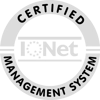Optimizing your warehouse is more than just a logistical step—it’s a crucial factor for the success and productivity of your business. In today’s dynamic world where logistics and supply chain management play central roles, continuous improvement and adaptation of your warehouse processes are essential. This blog article is aimed at those looking to make their warehouses more efficient, offering practical tips for warehouse optimization as well as proven strategies.
We cover various aspects, from redesigning your warehouse layout to implementing modern warehouse software and effectively utilizing your warehouse space. Each of these points plays a significant role in the efficiency of your warehouse. By applying the strategies presented here, you can not only improve your inventory management but also have a positive impact on the overall performance of your supply chain. This article will help you make your warehouse a vital, responsive, and cost-efficient component of your business.

Optimizing warehouse layout for maximum efficiency
A well-thought-out warehouse layout is the backbone of an efficient warehouse. The arrangement of shelves, selection of storage space, and flow of goods through the warehouse are crucial for optimizing warehouse processes. Here are some key strategies to consider:
- Analysis of the current layout: Start with a thorough analysis of your current warehouse layout. Identify bottlenecks, unused spaces, and areas where improvements can be made.
- Efficient space utilization: Maximize warehouse space by utilizing the height of the warehouse and adjusting shelving systems to optimize available space. Consider whether multi-level warehouse solutions or automated storage and conveyor systems are suitable for you.
- Minimization of movement: Reducing unnecessary movements and paths of warehouse employees can significantly increase efficiency. Place the most commonly used items within easy reach and use guidance systems to optimize paths in the warehouse.
- Flexibility: In a constantly changing logistics world, flexibility is crucial. Ensure that your warehouse layout is easy to adapt to seasonal fluctuations, changes in inventory levels, or new product lines.
- Use of technology: Modern warehouse software and Warehouse Management Systems (WMS) can help optimize the layout and make warehouse management more efficient. These systems provide valuable insights into inventory data and assist in the optimal placement of goods.
By considering these aspects, your warehouse can become a more powerful, responsive, and cost-efficient unit. In the next section, we will look at additional key strategies for warehouse optimization.

Efficient warehouse management and utilizing advanced warehouse software
Effective warehouse management goes hand in hand with the use of modern technologies. Implementing a powerful Warehouse Management System (WMS) can make a tremendous difference in warehouse optimization. Here are some key points to consider:
- Digitalization of inventory management: A comprehensive WMS enables precise monitoring and control of warehouse inventory in real-time. Digital tools can help identify inventory gaps, avoid overstocking, and optimize replenishment planning.
- Automation of warehouse processes: By automating repetitive tasks such as goods receipt and dispatch control or picking, you can increase efficiency and reduce errors. This leads to faster processing of warehouse tasks and a reduction in labor costs.
- Integration into the supply chain: An effective WMS should seamlessly integrate with the entire supply chain. This allows better coordination with suppliers, more efficient warehouse logistics, and optimized material flow control.
- Analysis and reporting: Utilize the data analysis capabilities of your WMS to gain insights into warehouse performance. These analyses can help improve processes, maximize utilization, and ultimately reduce warehouse costs.
- User-friendliness: Ensure that the warehouse software is user-friendly and allows for easy training of employees. This promotes acceptance and ensures effective use of the software.
By implementing these technologies and practices, your warehouse can become a state-of-the-art, efficient, and cost-effective component of your business operations. In the next section, we will look at the contribution of warehouse optimization to sustainability and reducing the CO₂ footprint.

Sustainability in warehouse optimization and reduction of CO₂ footprint
Sustainability and environmental awareness are also playing an increasingly important role in warehouse optimization. A well-designed warehouse can not only reduce costs but also make a positive contribution to environmental protection. Here are some approaches to making your warehouse more sustainable and reducing your CO₂ footprint:
- Use of sustainable packaging materials: By switching to environmentally friendly, recyclable, or biodegradable packaging materials, you not only reduce waste but also demonstrate your commitment to the environment.
- Improving energy efficiency: Rethink energy usage in your warehouse. Efficient lighting systems, solar energy, or other renewable energy sources can significantly reduce energy consumption.
- Optimization of space utilization: By maximizing existing space and reducing the need for additional storage areas, you can reduce energy consumption and associated CO₂ emissions.
- Waste management: Implement an effective waste management system. This includes separating recyclable materials and reducing waste overall.
- Green logistics: Consider more environmentally friendly transport options for the delivery and shipping of goods. This could involve the use of low-emission vehicles or optimizing delivery routes.
By integrating these sustainable practices, your warehouse contributes to reducing CO₂ emissions and promoting a greener supply chain. In the next section, we will address frequently asked questions about warehouse optimization.

Frequently asked questions about warehouse optimization
To provide you with a better understanding of the challenges and solutions in warehouse optimization, we have compiled some frequently asked questions with corresponding answers for you below. These FAQs cover a range of topics, from increasing efficiency in goods receipt to strategic warehouse space utilization.
How can I make the goods receipt process more efficient?
Efficient goods receipt begins with clear organization and structuring. For example, utilize barcode scanning and automated systems to expedite the recording of arrivals. It is also important to have sufficient space for unloading and initial inspection of goods to minimize delays.
How does optimized inventory affect overall efficiency?
Optimized inventory significantly contributes to efficiency improvement. It prevents both overstocking and shortages, making storage and warehouse space utilization more efficient. Additionally, precise inventory management enables better planning of replenishment orders and warehouse capacity.
How can I improve warehouse space utilization while reducing search times?
By applying principles such as “First In, First Out” and implementing a zone-based storage system, you can optimize warehouse space utilization. Furthermore, Warehouse Management Systems (WMS) help manage item locations, significantly reducing search times.
Are warehouse management systems a necessary investment for every warehouse?
Modern warehouse management systems, such as those offered by DEUFOL, are almost essential in today’s competitive environment. They not only optimize inventory and operations but also provide comprehensive visibility into all warehouse movements. These systems can significantly contribute to increasing efficiency, reducing costs, and improving inventory visibility.
How can I increase warehouse efficiency without incurring high costs?
One way to increase efficiency without incurring high costs is to optimize existing processes. For example, analyze your goods receipt and picking processes to identify time losses. Small adjustments, such as rearranging the warehouse or training employees to use existing space more efficiently, can already have significant impacts. Additionally, reviewing and potentially adjusting your warehouse logistics can help reduce lead times and improve overall efficiency without immediately investing in new technologies or equipment.

Our DEUFOL conclusion
Warehouse optimization plays a crucial role in logistics and is indispensable for a variety of companies. In this article, we have examined various aspects of warehouse optimization—from efficient use of warehouse space to the implementation of modern warehouse management systems to the automation and digitalization of warehouse processes. We have seen how essential it is to rethink every step in the warehouse to streamline processes, increase productivity, and ultimately enhance overall efficiency.
In this context, DEUFOL offers tailored solutions specifically designed to meet your individual needs and supply chain requirements. With our extensive experience in warehouse management, a global network of 90 branches, and our forward-thinking warehouse management systems, we are your ideal partner for efficient warehouse design. From implementing advanced warehouse software to providing warehouse space and offering consultation for optimized warehouse layout – DEUFOL assists you in improving and future-proofing your warehouse.
Contact us now for a personal consultation
Are you ready to take warehouse optimization in your company to the next level? Contact DEUFOL today for a personalized consultation. Our experts are ready to work with you to develop individual and efficient solutions tailored to your needs and challenges. Schedule your appointment now and take the first step toward a more efficient, productive warehouse!




